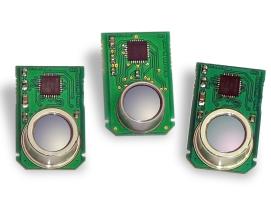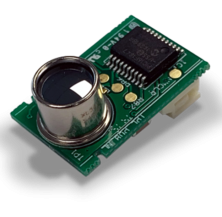
The infrared sensor (IR) is an electric device that detects the IR radiation in the surrounding area. The IR was discovered by the astronomer William Herschel by mistake when he was measuring the temperature of colors of light in 1800. He noticed the temperature was highest beyond the red light. From there, IR technology advanced, and it’s commonly used in different tools and to fulfill different purposes.
The IR sensor arrays are invisible to the naked eye but have a wavelength longer than visible light. There are active and passive infrared sensors. Let’s check the difference between these IR sensors
Table of Contents
Types of IR Sensors
1. Active Infrared
Active infrared sensors transmit and measure infrared light’s reflection levels. By analyzing changes in the properties of the reflected wave, these sensors can detect the presence of a person or object within their detection area, triggering the activation of the sensor relay.
These sensors capture snapshots of the reflected infrared signal and continuously compare them to the reflection levels obtained during regular usage. When an individual or object enters the detection area, the intensity of the reflected infrared light increases compared to the ground reflection, enabling the sensor to detect its presence.
One of the notable advantages of active infrared sensors is their ability to detect both movement and static presence, making them highly suitable for applications such as opening doors while ensuring pedestrian safety.
These infrared technology sensors stand out due to their unique capability to monitor and self-adjust in real-time, adapting to changing environmental conditions. This dynamic feature significantly reduces false door activations, enhancing reliability and functionality.
2. Passive Infrared Sensors (PIR)
Passive infrared detector sensors are designed to detect changes in infrared radiation within their coverage area. These sensors are particularly effective in identifying the presence of people or animals by detecting the heat emitted from their bodies. The term “passive” in the name refers to the fact that PIR sensors do not actively generate any signals but instead rely on receiving and processing incoming radiation.

The key component of a passive infrared sensor is the pyroelectric sensor, which is responsible for detecting and converting variations in the received infrared radiation into electrical signals for further processing.
Passive infrared sensors work by comparing the temperature emitted by a person, object, or animal with the temperature of its environment. The comparison allows the PIR sensor to accurately identify the presence of an object in a specific location. PIR has two components mainly;
- Fressnell lens
The specific optical lens mentioned is a thin, lightweight component composed of concentric rings arranged on a flat surface. It is placed in front of the pyrosensor within the coverage area. The purpose of the lens is to allow the infrared radiation emitted within the coverage field to pass through and be analyzed by the pyrosensor, thereby examining its distinct characteristics.
- Pyroelectric sensor
These sensors are designed to measure and detect changes in received infrared radiation. They incorporate a transistor within their circuitry to enhance and amplify the resulting electrical signal generated by a variation in the detected radiation.
The Difference Between Infrared Sensors and Passive Infrared Detectors
- IR sensors are designed to detect the emitted light from the transmitter is reflected by an object or a person. While the PIR sensors are focused on detecting changes in energy levels in their surroundings.
- In terms of installation, if a PIR sensor is oriented towards an environment with frequent changes, such as airflow patterns, it may generate false alarms. In contrast, IR sensors must be installed facing the direction of motion for accurate detection.
- IR sensors are typically installed externally on properties, while PIR sensors are more commonly used indoors.
- It’s important to note that PIR sensors do not emit infrared themselves; instead, they rely on objects emitting infrared rays that are then detected by the sensor. This contrasts with IR sensors, which actively emit and detect infrared radiation.
Conclusion
Since the discovery of IR sensor arrays, they have been gaining popularity by the day, and most people and organizations are taking advantage of their outstanding features. The IR sensors can detect motion at night and during the day, enhancing security in homes and companies. They are accurate and respond quicker than thermocouples.
